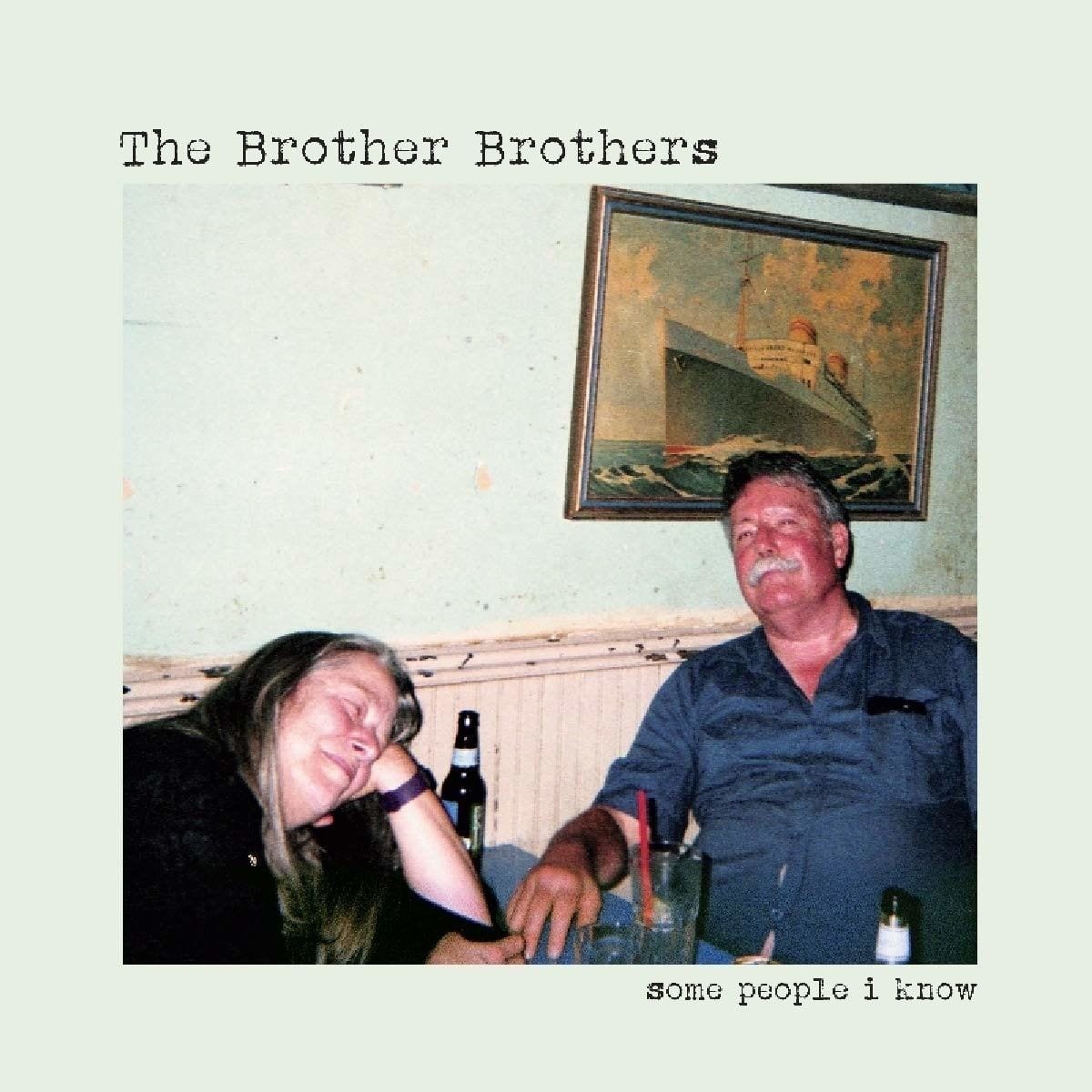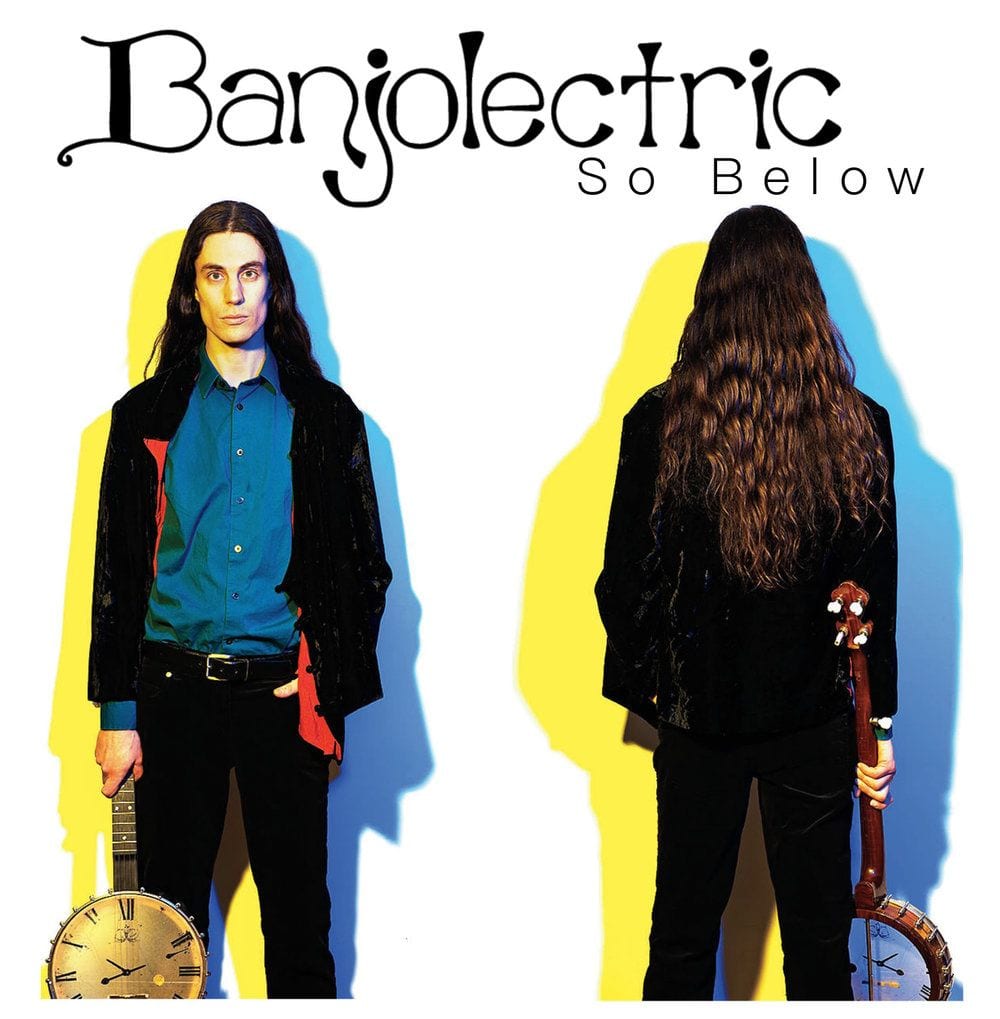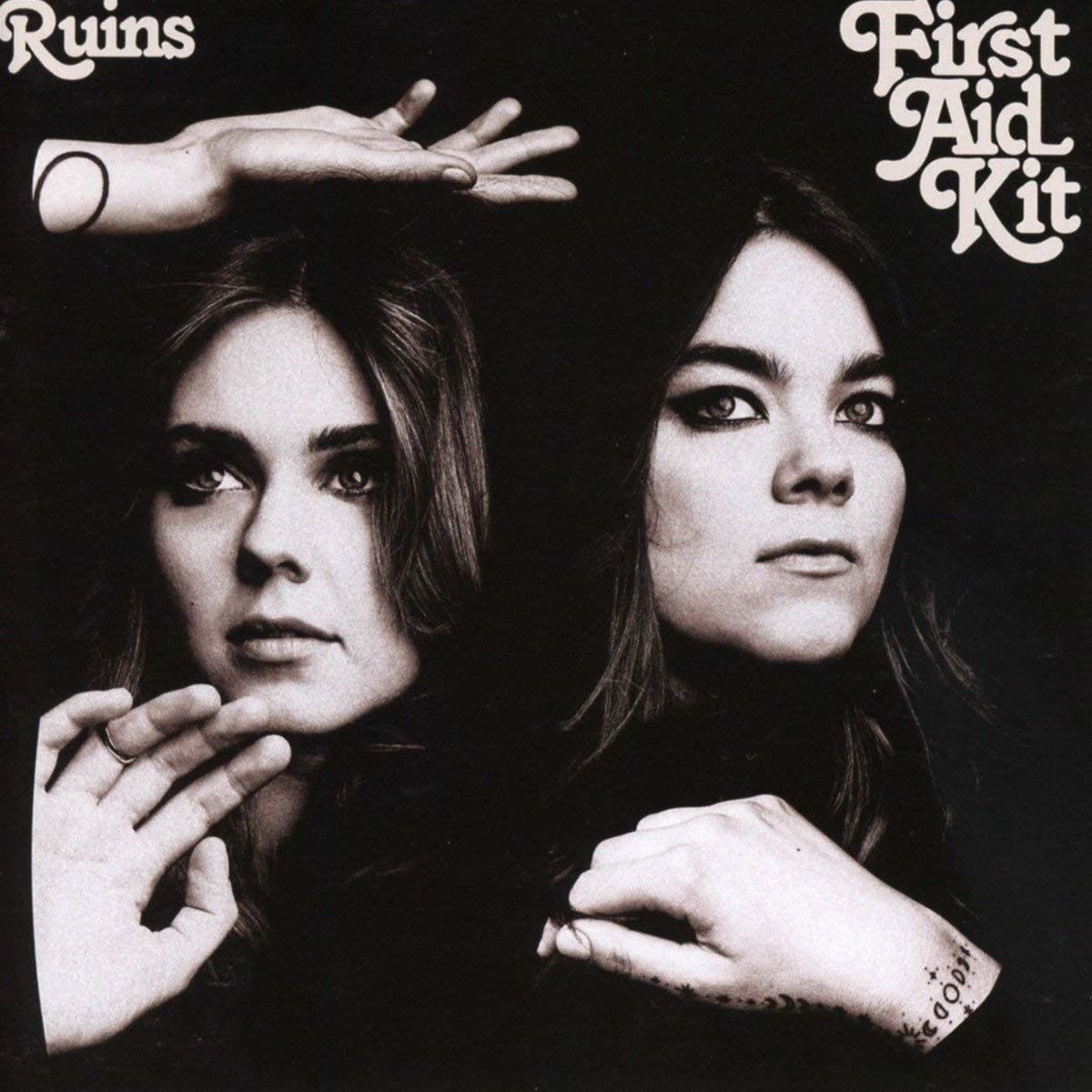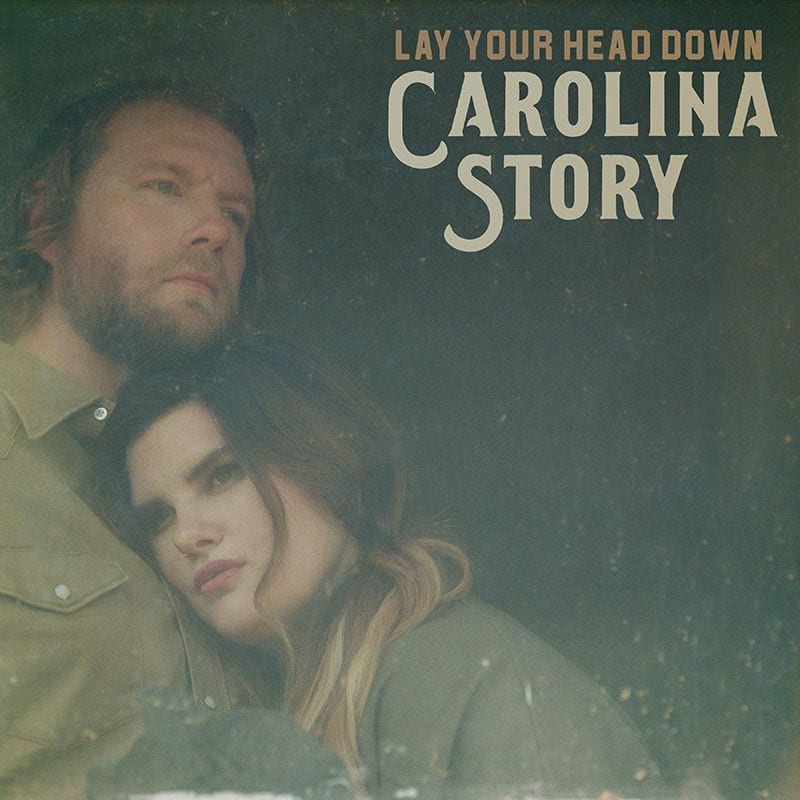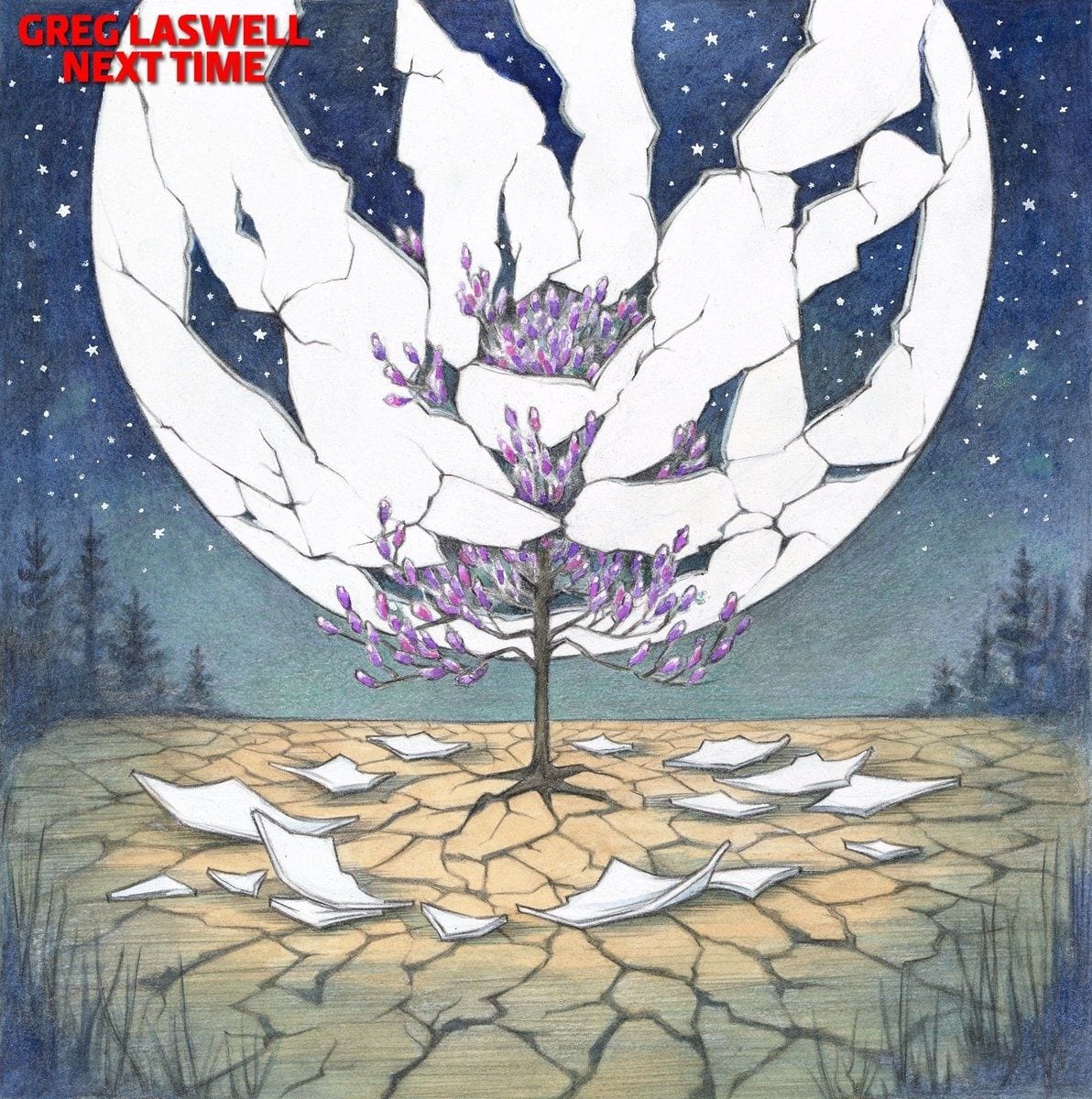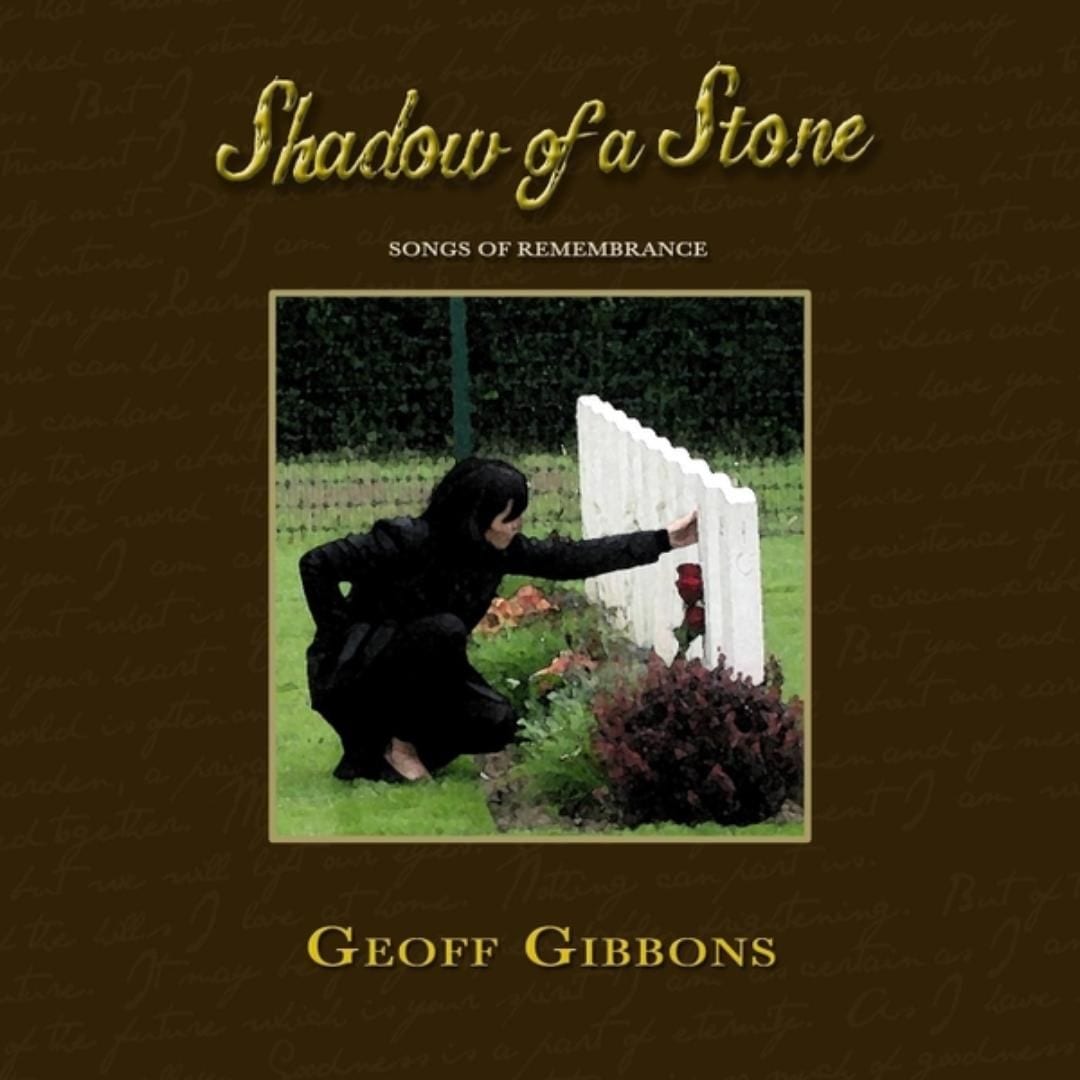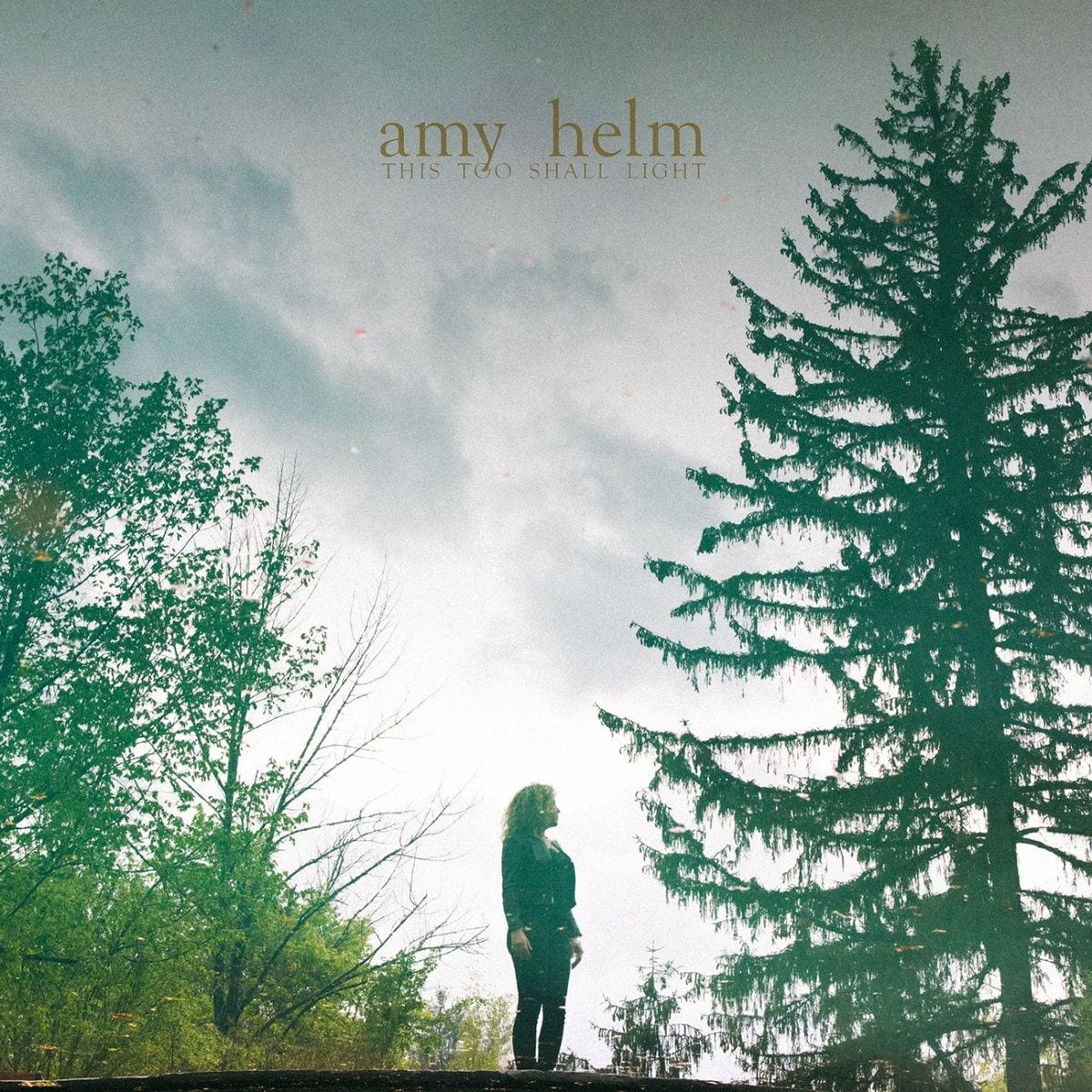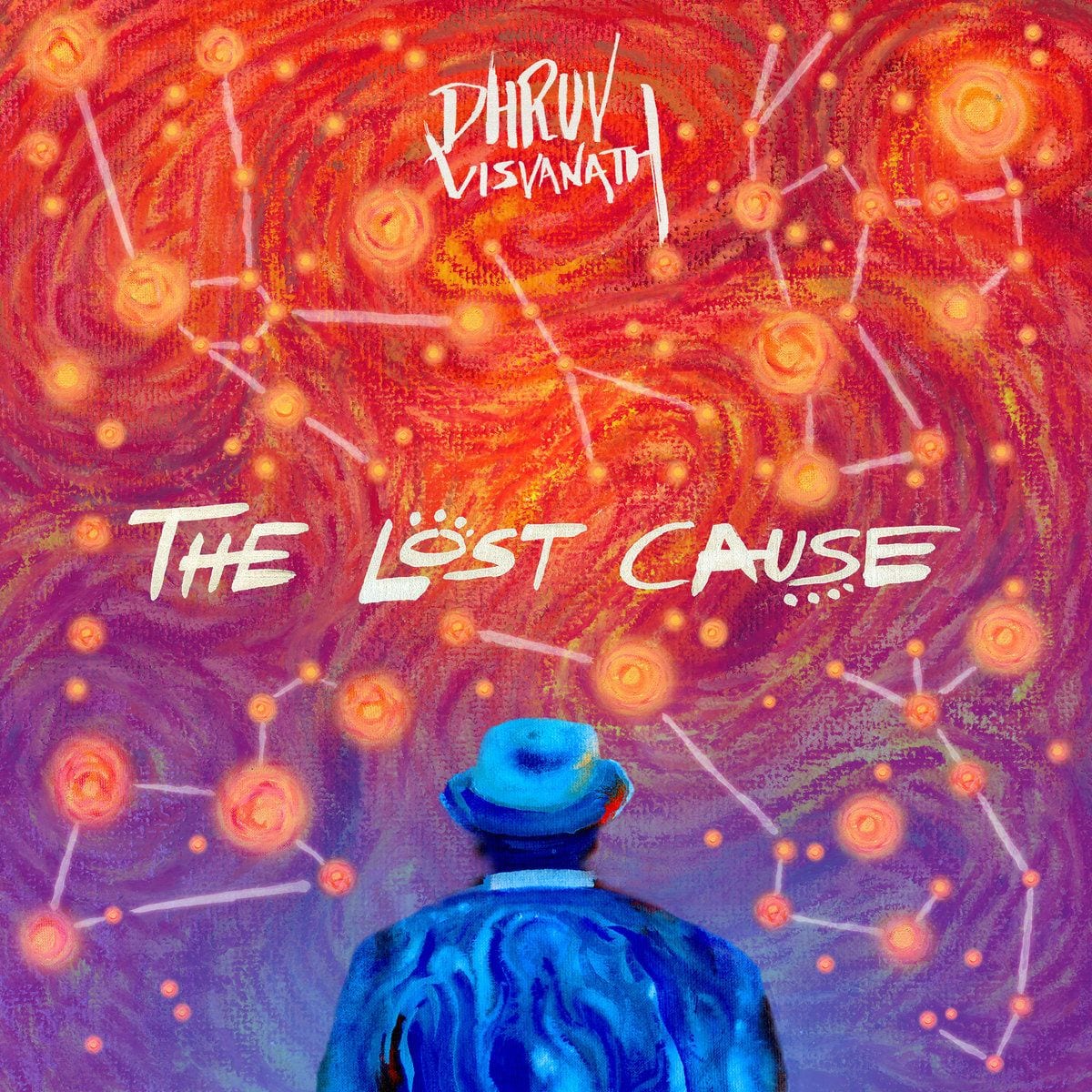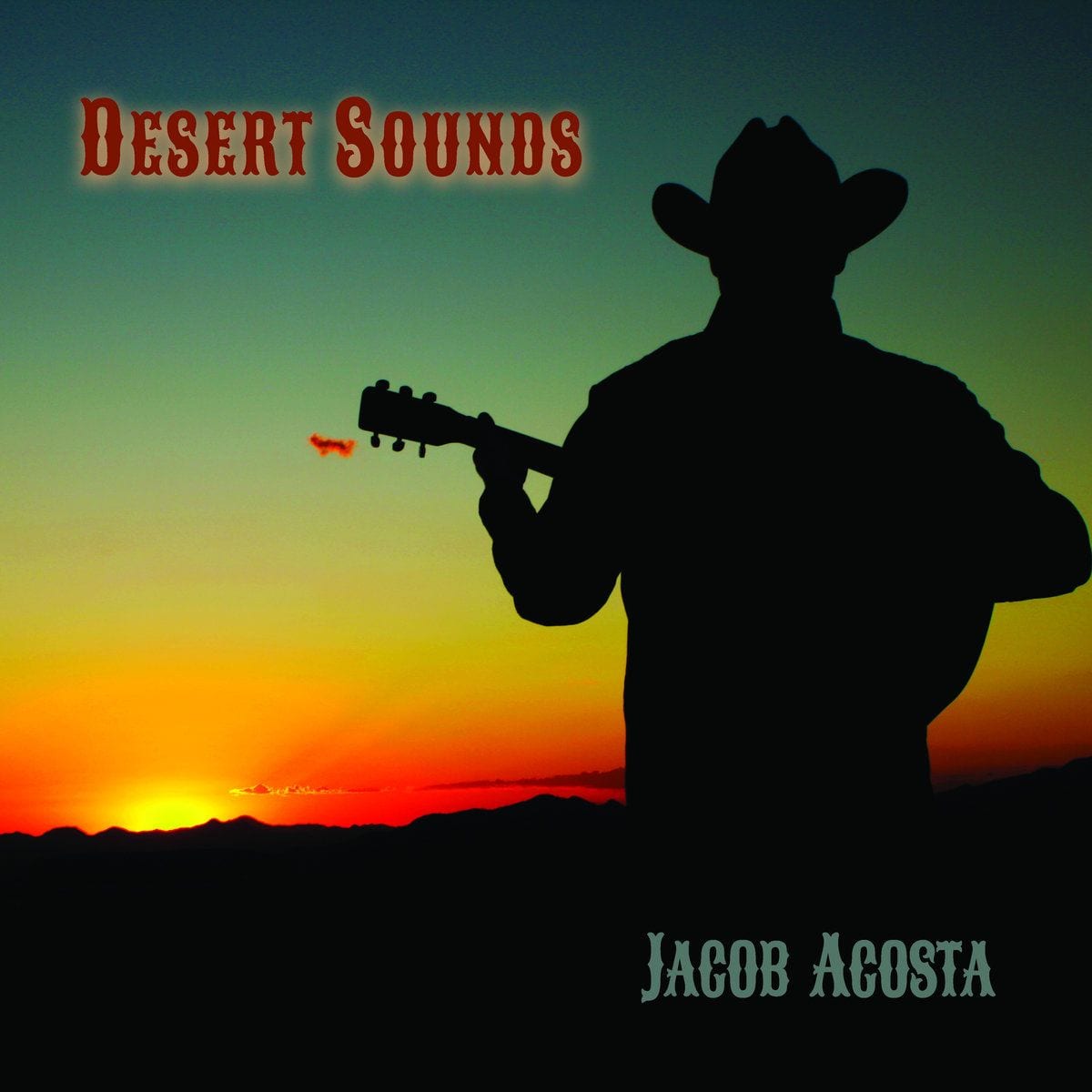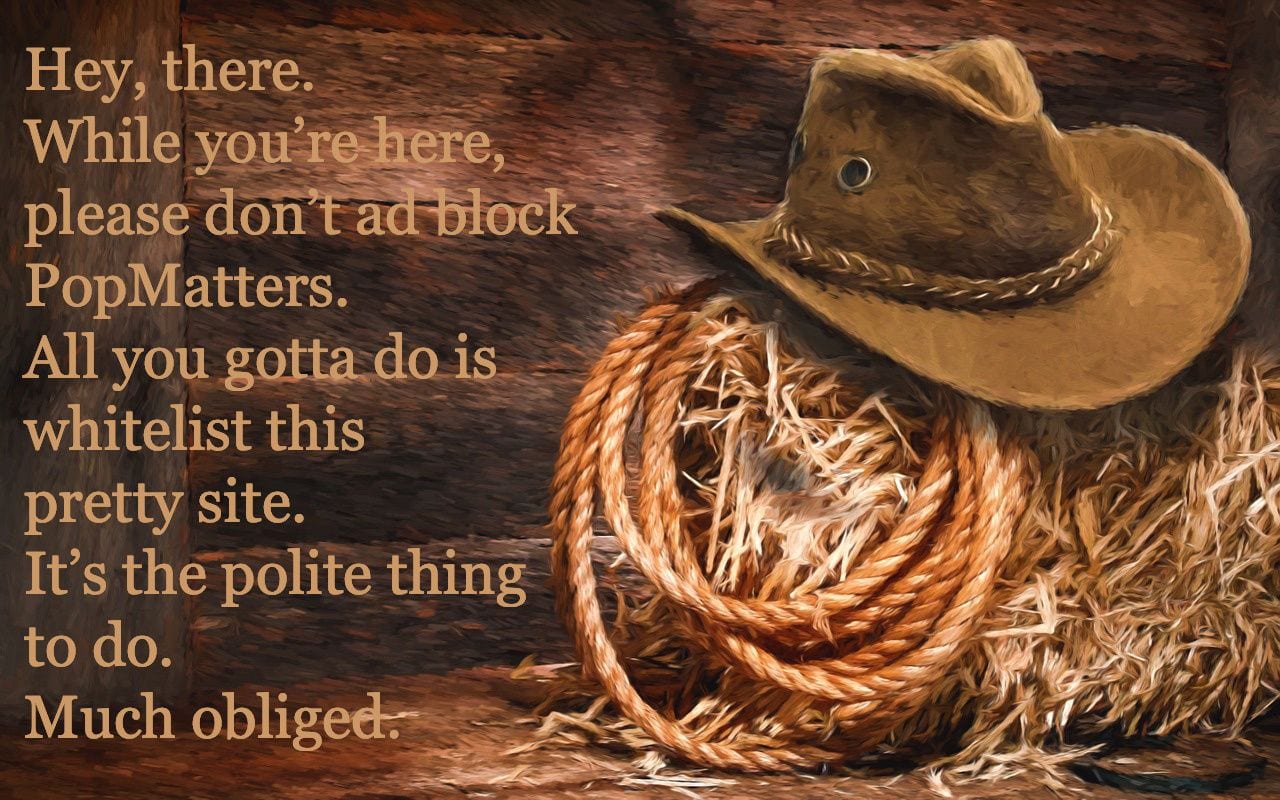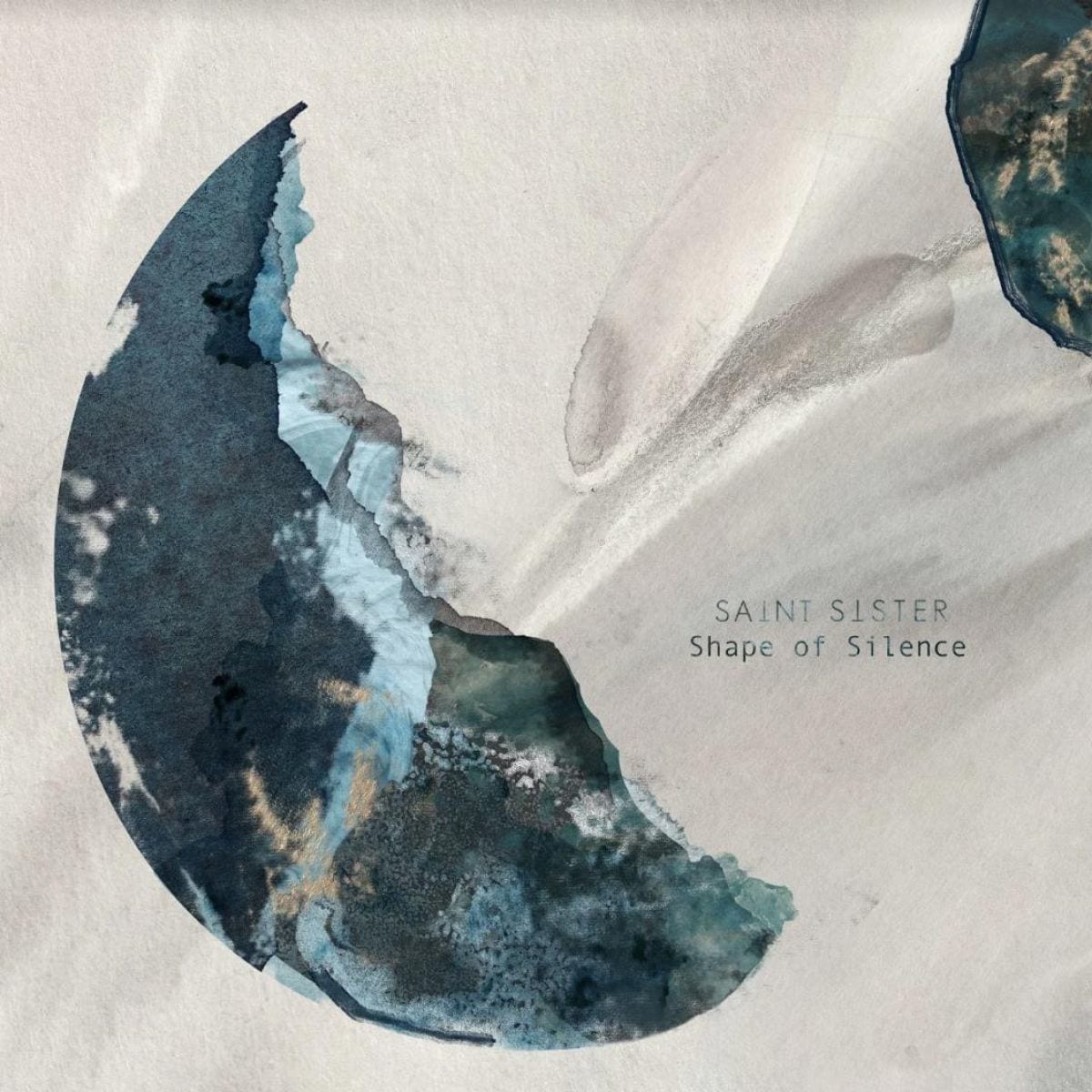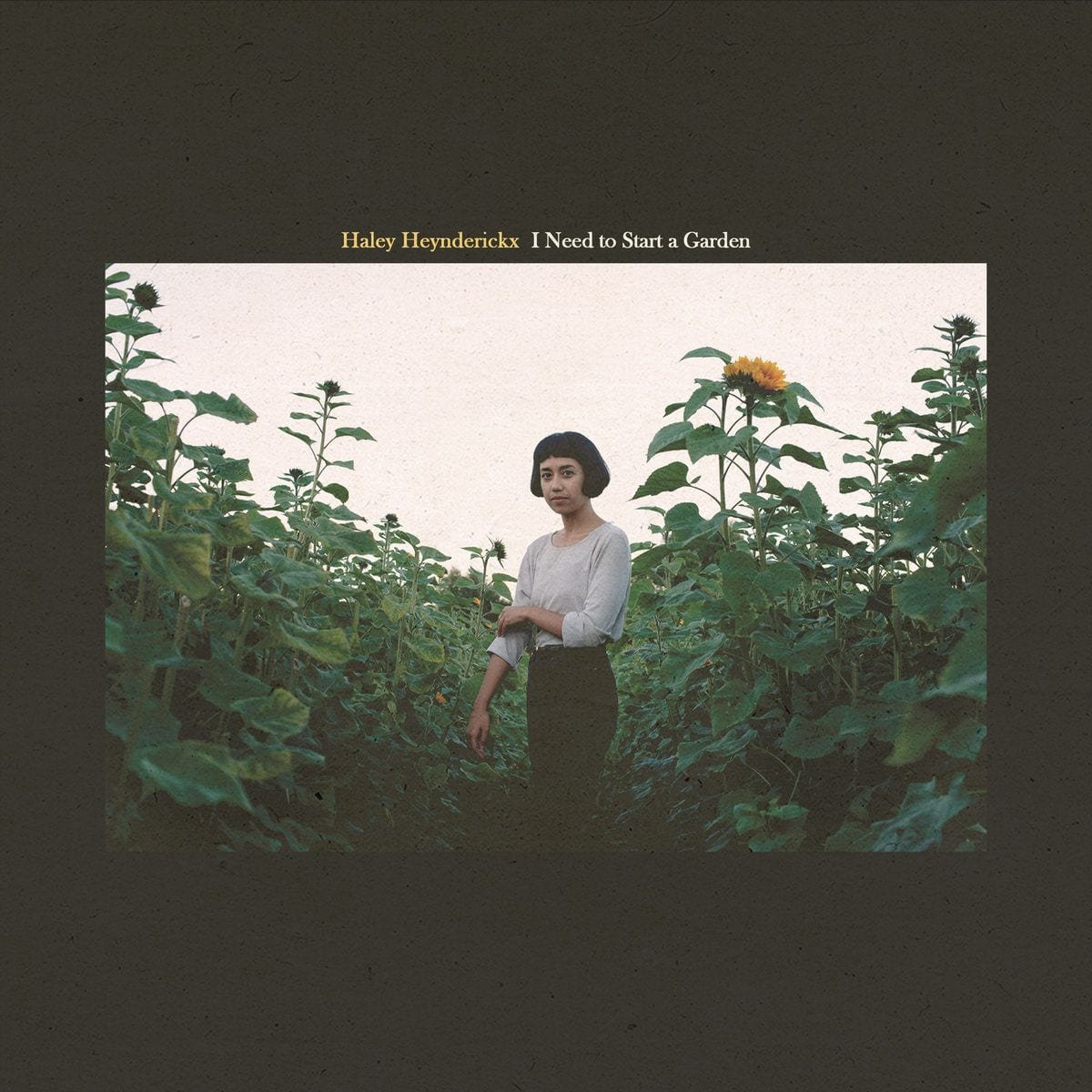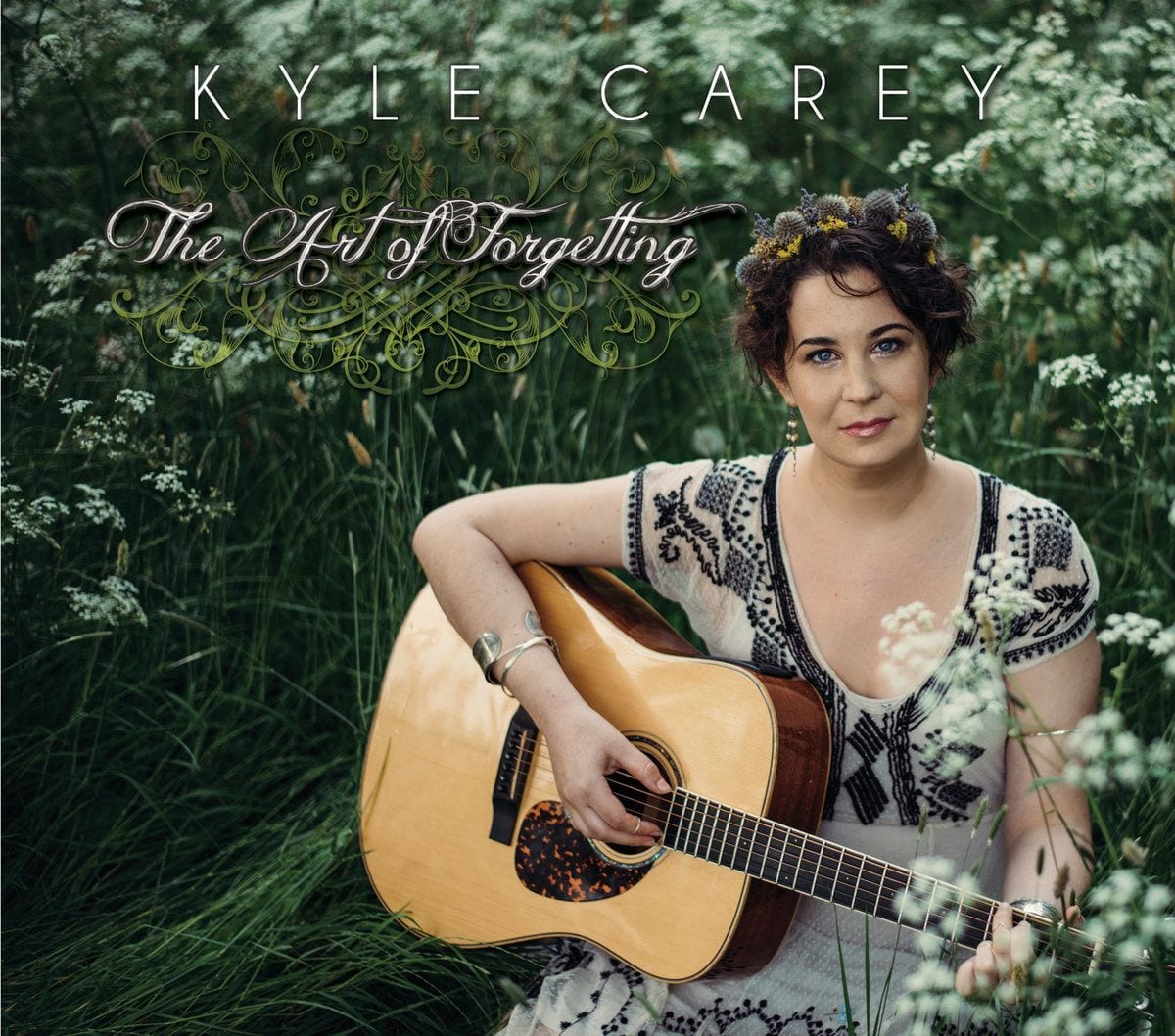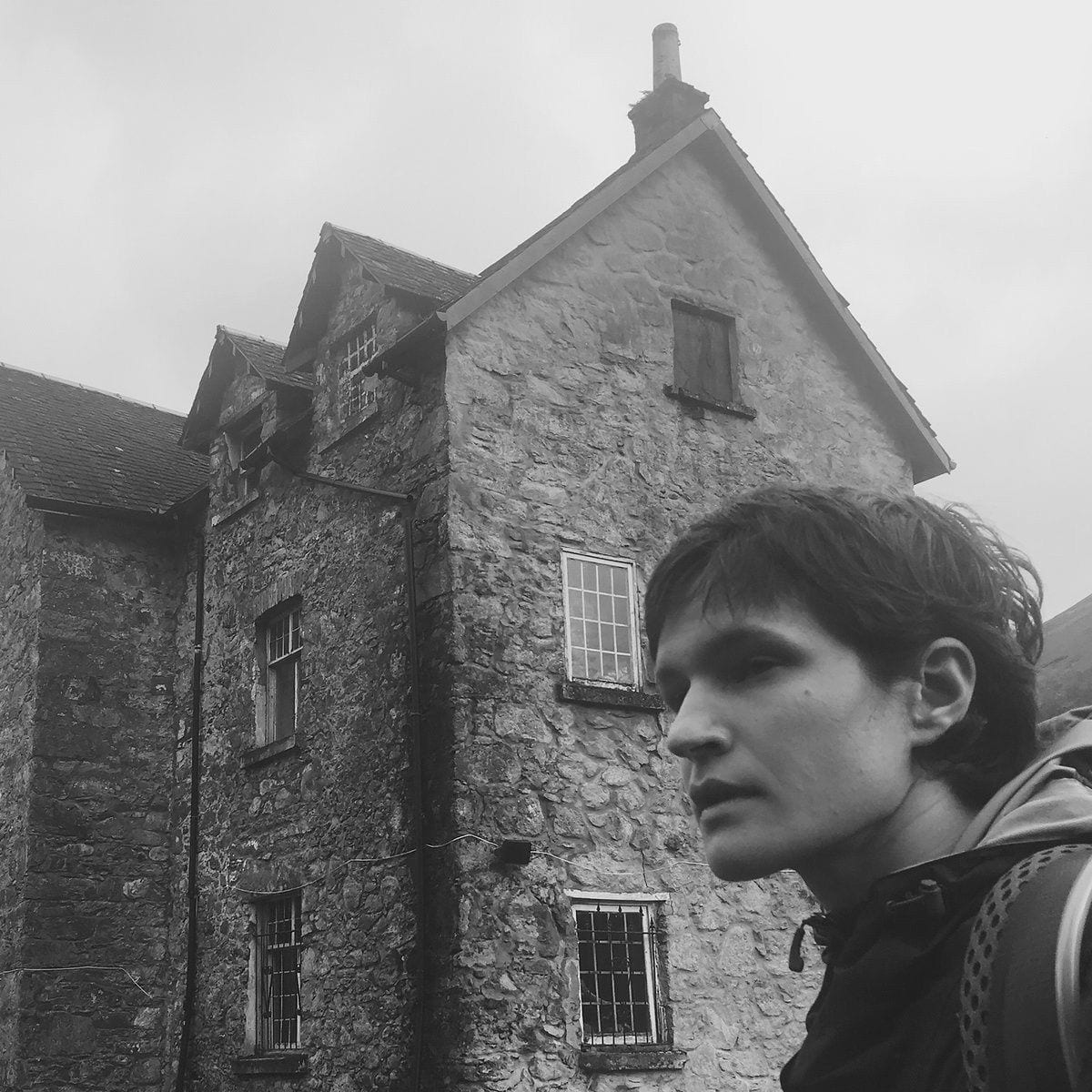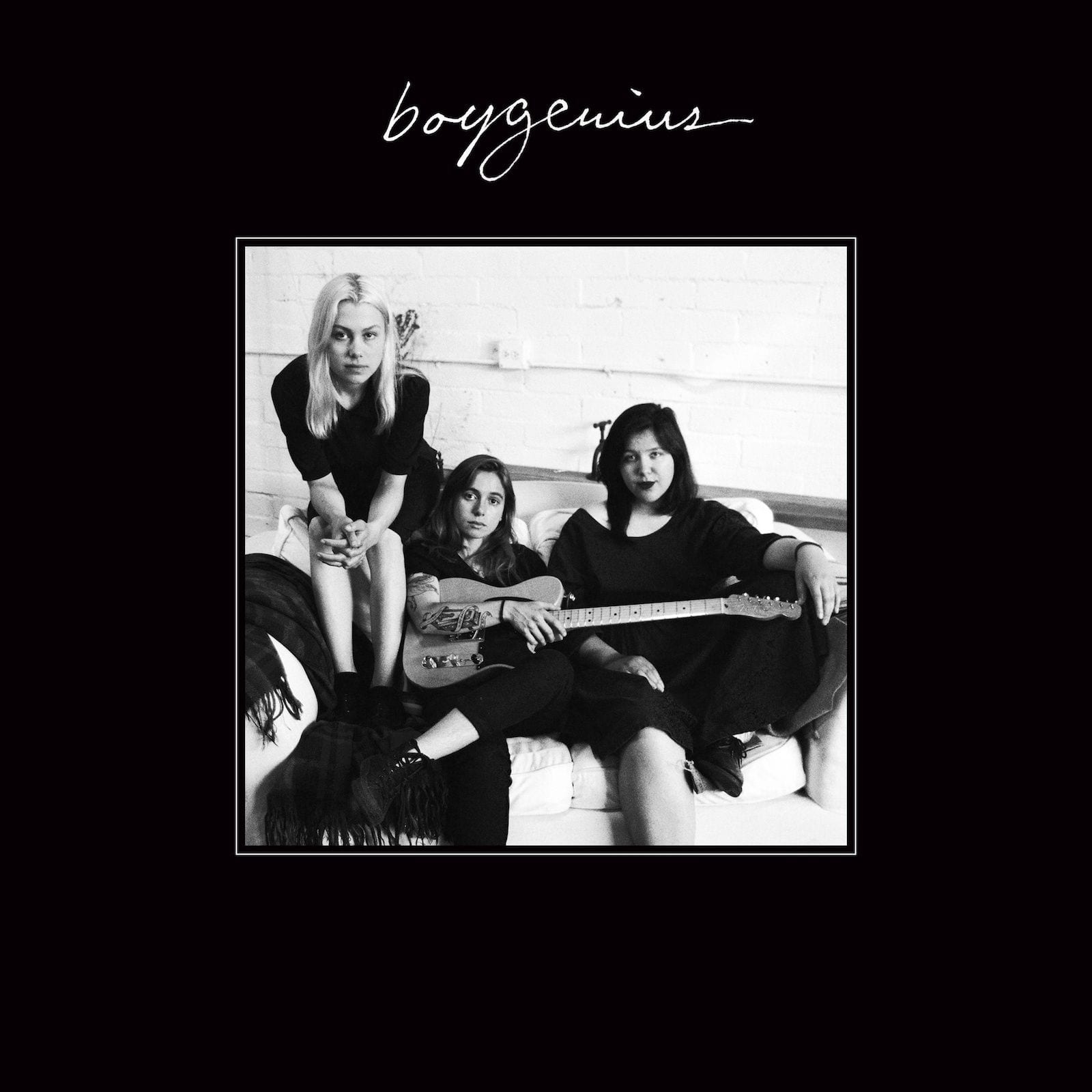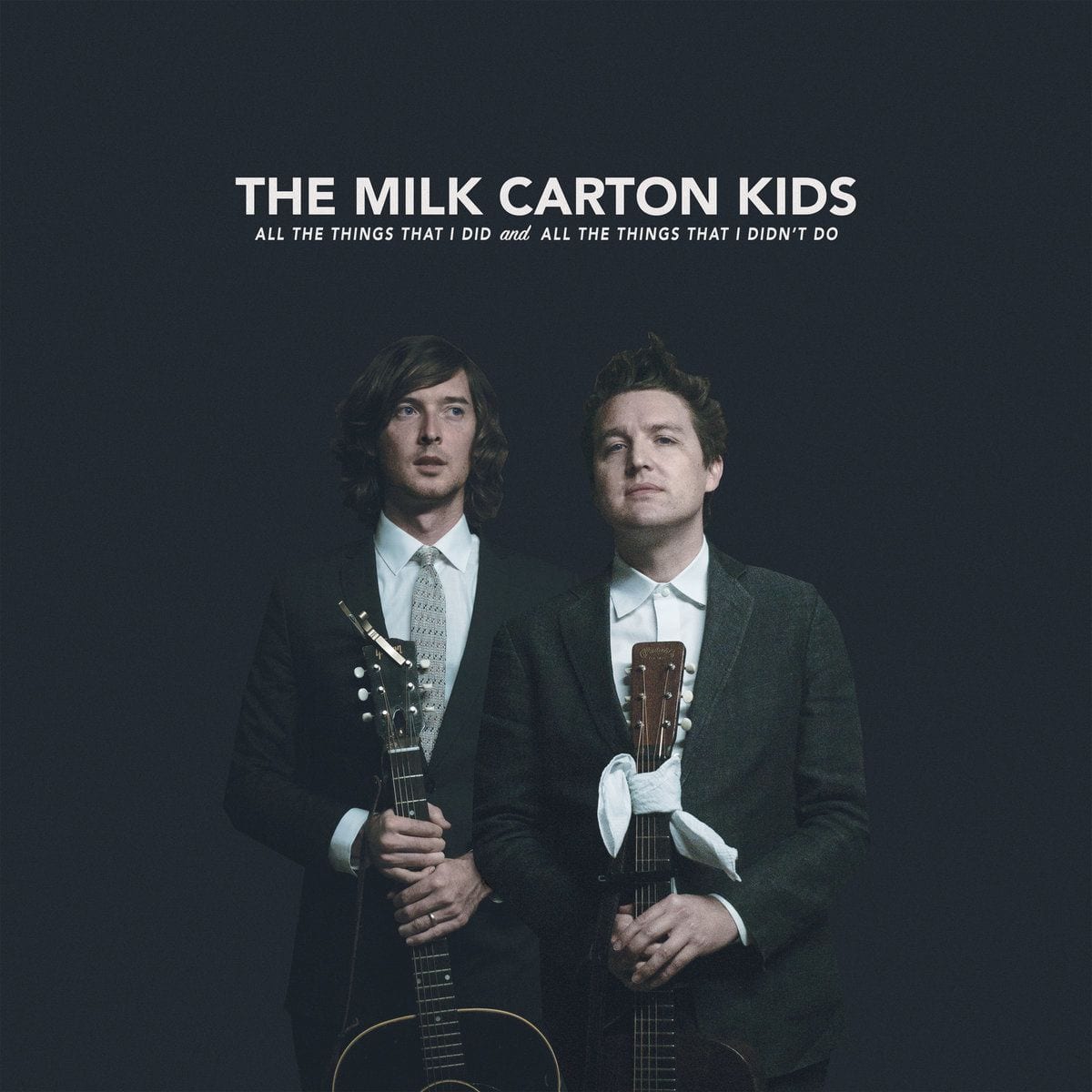As Cecil Sharp once inferred, folk music tends to swell in times of social and political turbulence. Henceforth, it may not come as a surprise that the genre has grown steadfastly in recent years. As the genre grows, folk music continues to broaden its horizons, surpassing and oftentimes subverting expectations laid down for it. Just as Americana continues to distinguish itself as a movement to country music’s left, folk in 2018 has kept the poignant storytelling elements so intimately knit into its fabric while introducing layers of new sonic and global influences.
In writing this list, we have forgone many musicians our readers may be expecting—from Brandi Carlile (who features nicely in our Best Americana Albums of 2018) to Joan Baez. In doing so, this list illuminates how folk as a whole is changing while maintaining key elements. It is evident that folk’s evolution distinguishes itself from that of Americana and commercialism alike. It’s not all just strumming acoustic instruments in the woods—although new releases from Haley Heynderickx and Rebekah Rolland touch on themes of naturalism and preservation betwixt bold confrontations and historical reflections, respectively. PopMatters’ first best folk feature could not come at a more active time for the genre. Folk is a movement that highlights valuable stories, platforms worth elevating, and a musical culture to cultivate in scintillating new ways.
20. Mountain Man – Magic Ship (Nonesuch)
Other entries on this list may have earned their spot in no small part due to sonic innovations. As far as Mountain Man’s Magic Ship goes, however, it has more to do with straight-shooting. Innocent and unadorned with frills as it may be, the female folk trio’s magic comes in their simplicity, as often evidenced throughout their new album. Meeting their strikingly calm delivery with pitch-perfect precision, Mountain Man aims to envelop listeners in an endearing sweetness and subtlety which they effortlessly produce throughout their efforts here. The trio are more concerned with the mundanity of everyday life as it offers itself to lovely tracks as “Slow Wake Up Sunday Morning”, and it is indeed magic in how easily they manage to ensnare one with their no-nonsense performances. For an album that spends as much time with its head up in the clouds dreaming of the journeys one could take instead of partaking in them, it captivates with its more straightforward beauties. It’s plain in the most positive sense of the word, reflecting on subjects at hand that are more than likely relatable to the listener. It often teases with a sense of looming adventure but is never quite trite. — Jonathan Frahm
19. The Brother Brothers – Some People I Know (Compass)
While not the first band of brothers or acoustic duo to hit the stage in years come and gone, Adam and David Moss arrive on the scene with earnest and charming blue collar folk. Expelling many of the modern amenities that other acts use in making a splash in the folk realm today, the Brother Brothers are straight-shooting, emotionally-appealing singer-songwriters whose sense of innovation comes more in how well they articulate stories – many of them set against the backdrop of their Brooklyn home. Taking on elements of bluegrass, klezmer, and various other folk styles along the way, the twin artists naturally evoke a sense of nostalgic longing in their heart-aching crooning. While comparisons to Simon & Garfunkel are as unavoidable and evident as they are already copious, the Brother Brothers strike a separate sense of intrigue with folk tunes inspired by the likes of gentrification and immigration. There’s plenty of love and loss to be had there, too, of course, and the Brother Brothers deliver each separate theme with as much sincerity and care as the next. They may not have quite hit their stride yet, but Some People I Know spells out tremendous promise for the burgeoning brothers. — Jonathan Frahm
18. Banjolectric — So Below (Self-released)
The banjo is a mainstay of the contemporary musical landscape indisputably due to folk music’s popular appeal. However, the instrument’s use is generally simplified as artists rely on the banjo to add a twangy accent to their musical creations. Yet for Gregory Mulkern, the banjo impresario behind Banjolectric, the instrument is a complex musical machine capable of recasting listeners’ expectations.
Banjolectric’s postmodern spin to the traditional folk instrument is captured in the EP So Below. Mulkern takes a two-pronged approach to the album. He maintains an identifiable roots sound but then shatters familiarity by including funk, hip-hop, and global music elements. All these components are rendered by the banjo seemingly unimaginable until experienced. But Mulkern is not content with simply keeping the banjo within the standardized stringed instrumentation arena. He also uses the five-string instrument to relay the banjo’s unused capacity to add percussion or a steady stream of supportive ambient noises. A skilled musician, Mulkern is also an accomplished songwriter and vocalist. The lyrics throughout So Below resemble poignant ballads while reciting emphatic au courant themes. As such, Banjolectric pays tribute to the instruments illustrious role in folk music history while using the contemporary moment to expand the banjo’s sonic capacity. — Elisabeth Woronzoff
17. First Aid Kit — Ruins (Columbia)
First Aid Kit’s fourth album, Ruins, extols transformation. The Swedish indie-folk marvels Klara and Johanna Söderberg wield the album to assuage both personal and professional catastrophe and resolution. Coming off the success from their 2014 album Stay Gold, the sisters found themselves at a familial and musical impasse. Further, Klara was recovering from a staggering break-up. Due to relentless touring demands in addition to the infighting and heartache, the two needed space before they could reunite as a creative entity. Ruins, released in January, was the result of the reconciliation.
Arguably, their recovery from devitalization lends itself to Ruins timeless folk energy. The lyrics exemplify a cool disenchantment unquestionably residual from their hiatus between albums. Threaded throughout the album is a steely and twangy honky-tonk energy that finds the sisters crossing over into unsullied country music terrain. The duo’s voices are crystalline and sire clarion calls making it hard to believe they were not raised in the southwestern United States. Ruins coalesce ballads, waltzes, and blues thereby accomplishing an absolute vintage vibe. Ruins transcend First Aid Kit from the realms of pop-Americana into full-fledged folk-country musicians. — Elisabeth Woronzoff
16. Carolina Story — Lay Your Head Down (Black River Americana)
Ben and Emily Roberts, the married duo who make up Carolina Story, almost quit the music business citing a feeling of stagnation. Yet spurred by creativity’s siren song, the duo released Lay Your Head Down in July. Endowed with intelligent narratives and heartfelt lyrics, the album’s use of vibrant melodies and down-home harmonies echoes bygone musical folk eras.
There is a resounding influence from the 1960s folk revival movement heard throughout the album. Carolina Story’s use of a harmonica creates a gratifying counterpoint to the euphonious and mellow vocals. In the folk tradition, Lay Your Head Down balances umbrage with optimism. The track “Gold” and “My Feet Keep Moving Still” acknowledge the commonality of ennui while confidently striving towards optimism. For Carolina Story, the search for solace results from introspection but is also inspired by nature. Lay Your Head Down finds Carolina Story evoking natural imagery that melds with their emotive lyrics. For example, in the title track and “Set in Stone”, the emphasis on nature exhibits a return to an agrarian existence and a renunciation of mass consumption. Carolina Story’s music exalts the belief that optimism and melancholy are not mutually exclusive. Lay Your Head Down meaningfully documents the ability to shift from self-doubt to perseverance to passion. — Elisabeth Woronzoff
15. Greg Laswell — Next Time (Leg Graswell)
Next Time is Greg Laswell’s most accomplished album to date. The singer-songwriter and multi-instrumentalist released the eighth studio album in September. Much as his previous recordings, Next Time was written, performed, and produced entirely by Laswell. Indeed, the album expands Laswell’s musical acumen as the inclusion of electric guitars and synths adjoin with his standard acoustic guitar and piano combination. The seemingly contrasting instrumental doublet serves as a symbol across Next Time. A study of duality, Laswell positions a flawed reality adjacent to hope and despondency.
Next Time is a portrait of human resilience ultimately moving the listener through periods of turmoil to indefatigably. In doing so, Laswell utilizes robust imagery to render a visual understanding of his music. He uses the symbol of a Royal Empress tree to demarcate contrast enlivened by addiction and sobriety. Later on the album, he depicts a super moon to signal the value of introspection. Laswell contemplates progression as circulatory especially how momentum is not always permanent and often includes regression. From the instrumentation to the lyrics then to Laswell’s own standpoint, Next Time finds the artist contemplating the past as an informant to the present. — Elisabeth Woronzoff
14. Geoff Gibbons – Shadow of a Stone: Songs of Remembrance (Bluecafe Music)
Giving us just four tracks to prove a point, Geoff Gibbons has his work cut out for him with the release of his newest EP. Aptly titled, following just five days past Remembrance Day, the singer-songwriter makes great use of the 20 some-odd minutes he gives us to tell the story of those who have lost their lives to war. While much of the album is spent with delicate tributes to fallen soldiers, “Soldier Soldier” takes a separate route in calling the world’s governments out for their hypocrisy. While all too eager to draft men and women to their deaths under the guise of false patriotism, Gibbons bluntly calls out those in power for their abuse of it; for those who don’t die overseas fighting for the special interests of a few, those few then get to turn around and wave them away once they return home. With veteran healthcare and homelessness being ongoing major issues, “Soldier Soldier” is a poignant protest amidst the subtle beauties of “Shadow of a Stone” and sardonic hopefulness found in “Please Remember Me”. It might just be a four-song effort, but it’s an effort well-made. — Jonathan Frahm
13. Amy Helm – This Too Shall Light (Yep Roc)
While furthering dabbling in the influences of gospel and soul, Amy Helm separates herself from the Americana leanings of Ollabelle with her most recent solo endeavor. The organic vibe emanating from This Too Shall Light might have to do with its fast-paced recording process, Helm and her team made the record with only a few takes and zero overdubs over the course of four days. That speaks more to her consummate musicianship than a rush job, culminating in a captivating set of covers and original songs alike. More or less a different path for the seasoned singer-songwriter to take, Helm traverses through a realm of introspection and self-reflection at the heart of the album, shining a light on her past and present alongside ours. It has what’s perhaps its greatest moment when Helm takes the lead on Allen Toussaint’s “Freedom For the Stallion”, offering a contemporary, searing soul to a track just as sadly relevant today as it was when it was written nearly five decades ago. It’s the pinnacle of the fire she gradually builds up throughout the album. Although it offers its crescendo early, all of what Helm has to give on This Too Shall Light is a passionate reflection worth delving into. — Jonathan Frahm
12. The Jellyman’s Daughter – Dead Reckoning (Boat Duck)
Having navigated their way into a strong sophomore release, Dead Reckoning takes the actual meaning of the term and puts it to an effective use as juxtaposed against the Jellyman’s Daughter’s actual history. Here, the duo pulls out all the stops, enhancing their sound with a rich production consisting of banjo, guitar, mandolin, double bass, fiddle, cello, and a full string section. It’s no wonder, then, that they’ve made as much of a splash in the UK when fulfilling the promise bursting at the seams of their initial debut. Somewhere between the realms of folk, bluegrass, pop, rock, and chamber music, Emily Kelly and Graham Coe let go of any sense of trepidation and go on to develop a deeply soulful, breakneck amalgam of old-time and new age roots influences alike. Their harmonic and instrumental performance throughout pushes the envelope as much as it is exemplary, making for a laudable, respectable exercise in dynamics. — Jonathan Frahm
11. Dhruv Visvanath – The Lost Cause (Self-released)
Dhruv Visvanath might be the perfect example of a modern-day troubadour, having honed his skills behind the piano and guitar alike amidst moves to Hong Kong, England, and Zambia throughout childhood. After losing his father at 16, a young Visvanath returned to India in hopes of selling his very much non-traditional sound. Eventually, the artist won over what was initially seen as a traditionalist crowd with his widely innovating, internationally-influenced music. Standing at the crossroads of folk, rock, and pop alike, Visvanath’s avant-garde compositions ride the line between genres as much as they do his geographic influences. Inspired as much by New Delhi as his world travels, The Lost Cause lives and breathes a particular sense of vibrancy and verve oft considered consistently lost amidst most adult audiences. His inspiriting works almost childlike influences in its sense of wonder come full-circle with “Wild” at its center – a sweet, harmonic search for freedom. The album is an intensely varied experience that all culminates in love for life and the world around Visvanath, bringing a swath of worldly, innovative rhythms and melodies with him along the way. — Jonathan Frahm
10. Jacob Acosta – Desert Sounds (Self-released)
Inspired by the rich histories and cultures of the southwest, Jacob Acosta’s 2018 effort is a deliciously eclectic desert opus. With each track more or less being a love song to the life he has lived out in Southern Arizona, one might infer that Desert Sounds could easily fall into the trap of being too laser-focused along too long of a running time. These worries are cast away from the moment that Acosta’s trademark whistle sets the scene for the adventurous, titular opening number following a prelude of actual desert sounds. Capturing the sounds of his desert home on the recording, Acosta effortlessly paints a picture of the beauteous natural scene set before them before breaking into song.
The singer-songwriter carries a staunch dedication to not only preserving, but celebrating, desert environments and raising awareness for how rich and varied the flora and fauna it houses are, and it’s evident straight away. Luckily, Acosta’s passion translates wonderfully into song, managing to incorporate American and Mexican musical influences alike into a richly varied, powerful presentation. Acosta also spends little time in setting the stage to highlight his uncanny abilities as a frontman; although this is a folk release, his rich and resonant vocals offer themselves in a chameleon-like fashion to the many varied, soaring soundscapes he sets before listeners. — Jonathan Frahm
9. Saint Sister – Shape of Silence (ie:music)
Saint Sister are bound to make folk purists’ heads spin. Of all things, the Irish duo deems fit to mesmerize with undulating electronic influences throughout their first full-length album. This is not the sort of electronica that would set an EDM-led club alight but is much rather thoughtfully pieced together in a way that is quite beautiful. In a sense, it’s an album that lives up to its name, basking in what can be heartfully made between the realms of folk and electronic music when one sets out to artfully craft it, being mindful of what intricacies to incorporate to accentuate the best from out of their fusion. There is a reason that the duo is such a hot commodity in the realm of indie folk at the moment, and Shape of Silence proves why with its heartfelt gloss. More like a subtle, mindful hum than a full-on blare, the electronic influences incorporated into their work undoubtedly make it all the better, elevating what would otherwise still be enchanting performances to new heights. — Jonathan Frahm
8. Haley Heynderickx — I Need to Start a Garden (Mama Bird Recording Co.)
Creating an album is analogous to cultivating a garden. From germinating ideas and seeds to producing and weeding, then finally releasing the music and harvesting the produce, a musician and gardener are mutually constitutive. Folk musician Haley Heynderickx understands and embodies this affinity. The release of her album, I Need to Start a Garden, indisputably tills uncertainty with sharp wit all the while rooting the power of individuality.
As gardening is often a solitary endeavor, Heynderickx mostly relies on herself to provide the instrumental accompaniment. Her musical stylings are distinctive: she switches between an acoustic or electric guitar using an adapted bluegrass fingerpicking technique. Likewise, her lyrics avoid nondescript metaphors and directly confronts lovers who undermined her confidence, or she boldly names the miscreant and their transgressions. I Need to Start a Garden captures a brazen singer-songwriter whose awareness informs her self-respect or endows her with the certainty to profess God’s a woman. Correspondingly, Heynderickx’s battle with anthropomorphized insects adds a comedic element thereby demonstrating the artist’s own acuity and sagacity. I Need to Start a Garden is akin to a tended garden with Heynderickx exhibiting a robust musical fecundity. — Elisabeth Woronzoff
7. Mount Eerie — (after) (P.W. Elverum & Sun)
Mount Eerie’s (after) is a musical memorial to the life Phil Elverum shared with his wife Geneviève Castrée, who passed away from pancreatic cancer in 2016. As a method to process his grief and mourning, he wrote the albums A Crow Looked at Me and Now Only. He performed a solo set comprised of the two albums under the auspicious shadows of a thirteenth-century cathedral at Le Guess Who? festival in the Netherlands. Released in September, (after) is the live recording of Elverum’s performance. Equipped with just his acoustic guitar, the performance was a public depiction of agony and bereavement. The simple instrumentation and disconsolate lyrics adroitly illustrate Elverum’s heartache while the solo endeavor symbolizes his widowhood.
However, the album is more than a rumination on loss. At the time of Castrée’s passing, she and Elverum were new parents to an infant daughter. In the wake of her death, Elverum needed to summon the love necessary for parenting despite longing for self-negation. Significantly, (after) finds Elverum contending with the life of a father and daughter as several tracks focus on the quotidian including making breakfast or preparing for school. Indeed, the realization of life’s continuity postmortem is one of humanity’s coldest truths. (after) makes it indelibly clear that death is the hardest on the living, not those who passed away. — Elisabeth Woronzoff
6. Kyle Carey – The Art of Forgetting (World Music Network)
The Art of Forgetting speaks to Kyle Carey’s rich history, having taken up residence in Nova Scotia and the Isle of Skye to study Scottish Gaelic songs and traditions, eventually becoming a fluent Gaelic speaker. Her music is a serene meshing of her two realms, born and currently based in New Hampshire, but with a well-studied Gaelic mindset besides her. Fusing elements of Appalachian and Celtic music, Carey’s music isn’t quite rooted in anything traditional as it is an innovation on both genres to patch together something whole and new.
Inspired further by the likes of a bevy of literary influences such as Louise McNeill and Charles Dickens, The Art of Forgetting speaks with a vibrant subtlety we are often left bereft of in albums that aim to engage the listener by means of innovation like this one. Lending a mindful ear to proceedings, it’s clear and quickly uncovered that Carey’s musical fusion is far more than a gimmick – it’s something innate and uniquely hers that offers an intangibly captivating spice to her work. Shining a light on the histories of English, Gaelic, and Appalachian traditions if only to develop something refreshing and contemporary for the folk realm, Carey and her A-list support team (including Rhiannon Giddens, Sam Broussard, and Ron Janssen) craft a matured, minimalist beauty throughout. — Jonathan Frahm
5. Adrianne Lenker — abysskiss (Saddle Creek)
Big Thief singer Adrianne Lenker is an expressive storyteller. She transcends the confines of a recorded album to graze the spirit of the listener. abysskiss, released in October, is shaded by a tender ardor rectified by an embittered slant. Relying on vocals, acoustic guitar adorned by graceful fingerpicking, and keyboards, she sets to music existential quandaries including birth, death, and waning youth. The lyrics are interchangeable with prose, yet she maintains a sense of youthful merriment with references to dragons and puppies. With sincerity and without pretension, she considers the quotidian juxtaposed to the mystical. Similarly, trite romantic relationships flit through the album. Although, the emphasis of these tracks is not infatuation rather Lenker’s commitment to remaining independent and self-possessed. As a nod to traditional folk music’s embrace of melancholy, abysskiss includes a narrative of a loving family emotionally torn asunder when the mother figure dies in her husband’s embrace. Lenker’s voice is hushed to a barely audible whisper creating the impression of death’s presence. As a result, abysskiss is as reassuring as it is haunting. — Elisabeth Woronzoff
4. boygenius — boygenius (Matador)
boygenius’ self-titled EP is the quintessential indie rock and folk music crossover. Balancing riotous guitars and turbulent percussion with lush vocals and spirited narratives, the band at once embraces folk ethos while rejecting conventionalism. The supergroup, comprised of Julien Baker, Phoebe Bridgers, and Lucy Dacus are each an accomplished writer and musician. However, as a trio, they meld their voices to establish a rich tapestry of sound while their instrumentation imbues a quasi-folk-rock sensibility. Unquestionably, boygenius enables each artist to contribute their unique creative standpoints while forming a demiurgic collective.
Despite their individual celebrity, boygenius shows no discernible frontwoman. As boygenius unfolds, it becomes apparent that each musician is attuned to balancing their time at the mic with stepping back then allowing their bandmates to take over. boygenius signals a profound belief in collaboration and reverence for the others’ talents. The spirit of unity is audible on the harmonized rounds they employ throughout the album. Their vocal fusion and distinct instrumental approaches create a mindful countering of the isolation and community binary, a dynamic scrutinized across folk music. boygenius’ EP slyly subverts genre and creative expectations while blurring the boundaries between indie and folk rock. — Elisabeth Woronzoff
3. Rebekah Rolland – Seed & Silo (Sky Island)
Inspired largely by her one-year residency in Beatrice, Nebraska for the National Parks Service Centennial, Rebekah Rolland’s solo debut takes a two-pronged approach when setting its goals. With Seed & Silo, the singer-songwriter’s intent was to craft a piece of art that would be beneficial in raising awareness towards the preservation of national parks while cultivating an appreciation for natural vistas and their rich history. The unique vision behind the album brings a refreshing air to its songs, all of which contribute to the aforementioned overarching concepts alongside a respectful observation of the works of Willa Cather. “The Spirit”, for instance, reflects on the story of Ántonia Shimerda and her father, both in his short-lived life on the prairie and in the legacy he leaves following his passing. Sprightly, intricately-crafted arrangements and melodies breathe life into the album, assuring its wistful vibrancy throughout as Rolland reflects on the harsh realities of prairie living and the colorful history that came out from it.
With land protections being slashed and desecrated in recent years amidst continued infringements towards indigenous peoples, highlighting the importance of respecting and preserving our natural lands seems even more paramount than ever. In partnering with the National Parks Service, Rolland has developed an altogether harrowing, enlightening collection of songs that all ultimately round back to the utmost important fact that more has to be done to assure the safety of what little of the natural resources we have left. The pioneering country that she tells the story of is utterly different compared to the international superpower the United States is today and not every change has been for the better. Amidst a bevy of timely literary references, Seed & Silo serves as a means of reminding us of the good and bad of past alike in hopes that we may better our present circumstances. Between it all is a stunning collection of stories redolent of a specific time and place in history, illuminating in tunes like “Hole in the Earth” not quite like any release prior. — Jonathan Frahm
2. The Milk Carton Kids – All the Things That I Did and All the Things That I Didn’t Do (Anti-/Epitaph)
When the Milk Carton Kids first gave listeners a taste of All the Things That I Did and All the Things That I Didn’t Do with “One More for the Road”, it was clear that it wouldn’t quite be like their previous releases. Namely, the celebrated duo’s fourth album is the first to introduce a collective of instruments to proceedings. What better way to introduce long-time listeners to their newfound sound than with a romp through folk, jazz, and even psychedelic leanings that clocks in at just over 10 minutes? Uncannily, the remainder of what the Eagle Rock singer-songwriters had up their sleeve feels just as ambitious, featuring a melange of sustaining instruments that at no moment cancel one another out or feel misplaced. Rather, the introduction of anything ranging from fiddle and mandolin to clarinet, saxophone, and Hammond organ helps bring an effervescence to the Milk Carton Kids’ arrangements not quite like what we’ve heard from them in the past. All at once, however, it’s also warmly familiar, accompanying and accentuating the duo’s performances without overpowering them.
In no way is this a dashing of their brilliant past efforts, but All the Things That I Did and All the Things That I Didn’t Do represents as much of a new avenue for folk at large as it does an opening-up of fresh territory for the band to explore. All the while, it keeps that same penchant for evocative lyricism and heart-rending harmonies that fans have come to love them for. Forgoing self-production and expanding their band to a significant degree may have initially seemed like cause for worry, but all such worry was quickly stymied once the album was let loose into the world. — Jonathan Frahm
1. I’m With Her — See You Around (Concord)
Aoife O’Donovan, Sara Watkins and Sarah Jarosz are experienced musicians whose backgrounds range from string bands and chamber music all the while strengthening their singer-songwriting skills. The trio came together as I’m With Her after an impromptu performance at the Telluride Bluegrass Festival in 2014. An origin story indubitably reflecting folk music’s roots. Versant with the foundations of folk and bluegrass music, their debut album, See You Around, positions the musicians as catalysts for their own creative power.
O’Donovan, Watkins, and Jarosz are the album’s primary instrumentalists. The featured fingerpicking and fiddling are relics of bygone eras while centralizing the trio’s acumen. If the music does not lure in listeners, then the vocals certainly will. Throughout See You Around, the trio moves between singing in beatific harmony then enkindling their individual voices. The vocals are honeyed yet orotund eschewing any sense of overproduction or ornamentation. More so, the lyrics are stirring and written to reflect contemporary gender identity. The female protagonists made visible in I’m With Her lyrics are ardent and commanding. Much as the trio themselves, the lyrics feature women who determine their agency yet are also realistically flawed. See You Around reconciles the folk tradition with modernity while positioning I’m With Her as exciting folk musicians. — Elisabeth Woronzoff



